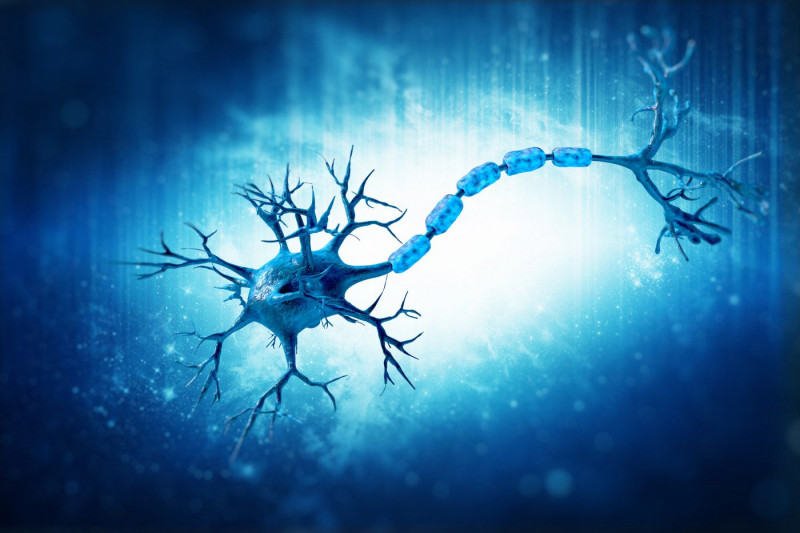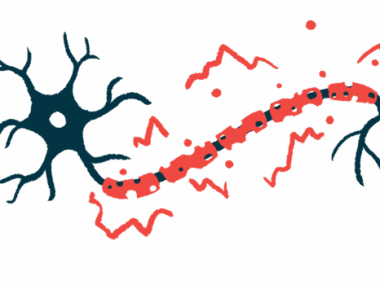Thickening of Lower Spinal Nerves Found in Siblings with CMT4H
Written by |

vitstudio/Shutterstock
Thickening of the cauda equina — a bundle of nerves at the end of the spinal cord — was found for the first time in two siblings with a milder form of Charcot-Marie-Tooth disease type 4 subtype H (CMT4H), a case study reported.
This finding warrants further investigation regarding its possible usefulness in identifying cases of CMT4H, its scientists stated.
The study, “Sibling cases of Charcot-Marie-Tooth disease type 4H with a homozygous FGD4 mutation and cauda equina thickening,” was published in the journal Internal Medicine.
CMT4H is an early onset disease that typically progresses slowly. It is caused by mutations in the FGD4 gene, which provides instructions to make frabin, a protein that plays an important role in the nervous system, where it regulates myelin production. The altered protein causes abnormalities in the formation of myelin sheaths around nerve fibers, resulting in the symptoms and signs of CMT4H.
People with CMT4H generally develop scoliosis (curved spine), muscle weakness in the distal muscles (those far from the center of the body), and foot deformities.
A team of researchers in Japan detailed an apparent first report of thickening of cauda equina nerve fibers in a brother and sister whose parents were consanguineous, meaning they shared a common recent ancestor and were relatively closely related.
“In addition to previously reported characteristics of CMT4H, such as early onset, slow progression, distal muscle atrophy, scoliosis, and foot deformities, cauda equina thickening on MRI was observed in both cases,” the researchers wrote.
The first patient was a 62-year-old woman who had difficulty walking and in manipulating objects with her hands. At age 7, she realized she ran slower than her peers. At age 12, she began experiencing difficulty bending her feet. A gait disturbance started to develop slowly, but she was able to walk unassisted.
When she was 51, the woman was first suspected of having a neurological disorder. She had muscle weakness (or atrophy) in the distal muscles, hypoesthesia (loss of sensation in a part of the body), and abnormal gait. Nerve conduction studies revealed that the response of certain nerves to a stimulus was either slow or absent.
A definite diagnosis, however, was not made until the patient visited the hospital again, 11 years later. Besides the previous symptoms and signs, by now she also experienced decreased sensitivity to pain and a vibrating sensation in the distal limbs. She also had pes cavus (high foot arch) with hammer toes (bent at the middle joint). In addition, she reported having a history of hypertension and osteoarthritis of the hip joints.
X-ray and computed tomography scans revealed scoliosis. An MRI of the lumbar spine showed a thickening of the cauda equina.
After suspecting Charcot-Marie-Tooth disease, the researchers did a genetic test to screen for mutations in genes linked to the disease. A mutation, c.1730G>A (p.Arg577Gln), was found in both copies of the FGD4 gene.
Her older brother, who was 68 at the time, had similar physical traits. He first visited a neurology department after his sister was diagnosed with CMT4H.
At age 7, he too realized he ran slower than his peers. At age 27, he was diagnosed rheumatoid arthritis. He had minor difficulty in manipulating objects with his hands, which he attributed to the rheumatoid arthritis.
At 68, he underwent neurological examinations that revealed muscle weakness, hypoesthesia, decreased sensitivity to pain, and a vibrating sensation in the distal limbs. Foot deformities were similar to those of his sister, but more severe.
Nerve conduction studies likewise found certain nerves with a slow or absent response to a stimulus. An X-ray showed scoliosis, and an MRI of the lumbar spine revealed thickening of the cauda equina as well as several herniated discs.
Genetic testing revealed the same mutation as his sister in both copies of the FGD4 gene.
“This is the first report of CMT4H with a homozygous FGD4 c.1730G>A (p.Arg577Gln) mutation showing mild progression and cauda equina thickening,” the researchers wrote.
“Cauda equina thickening may be a characteristic neuroradiological feature of CMT4H and thus warrants further investigation in the clinical identification of CMT4H cases,” they concluded.






